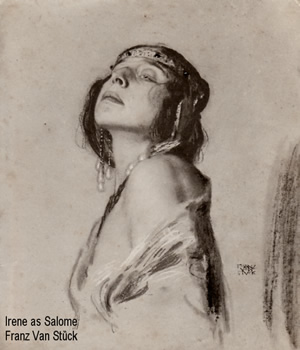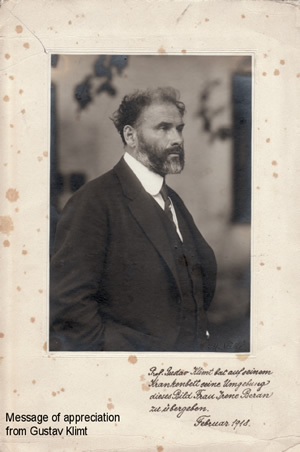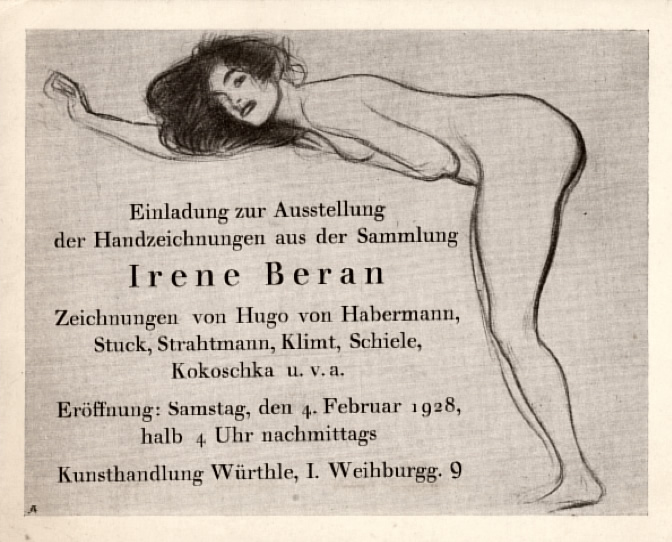Unlike in later life when Irene plays a supportive role to Bruno Beran, as a young woman she accomplishes much on her own account.
Paradelo, reporting Bruno's words, tells how she was in contact with the cultural elite of the time, corresponding with Tolstoy and with D'Annunzio, a favourite poet. She appeared in his "Martyrdom of San Sebastian", with music by Debussy, and began what would become a singing career which took her to the stage of the Vienna State Opera, "Her beauty and the purity of her voice captivated all who heard and watched".
She acted as an artist's model for husband-to-be Bruno, Habermann, Von Stȕck and, we believe, Klimt. Bruno once described her as "the Mona Lisa of the Austro-Hungarian Empire, thanks to whom it would not disappear completely". He continues more reflectively, for this was the period immediately following its collapse, "My Mona Lisa does not smile for her almond eyes, deluded and sad are directed towards the Empire gone, so different to the Florence of Leonardo".
Irene also supported avant-garde artistic movements at a time when they were rejected by the public and mocked by critics. She appreciated especially the work of the expressionist painter, Oskar Kokoschka, when no one took the slightest interest in him. As the daughter of one of Brno's wealthiest merchants, Irene was financially independent and able to buy works of unappreciated young artists so that, over time, she came to own a very valuable collection.
Her collection, exhibited at Vienna's Wȕrthle Gallery in 1928, was subsequently lost and this catalogue† is the only record we now have. Even this is incomplete, as the catalogue refers to further unnamed works in store. She collected drawings and watercolours of Klimt and Kokoschka, two front-ranking Austrian artists. Others were added during Bruno and Irene's Munich years – again well known artists such as Von Stȕck, Habermann (Bruno's mentor) and Corinth (who had introduced the German speaking world to Impressionism). Others were associated with the art magazines, Jugend and especially Simplicissimus - Heine, Mayrhofer and Lotte Pritzel.
The Wȕrthle Gallery was instrumental in the development of the modern movement in Vienna and remained in business until the 1990s. The catalogue for Irene's exhibition reproduced here includes an introduction by Arthur Roessler, biographer of Klimt and Bruno, and notable for his promotion of Egon Schiele.
What has happened to all these pieces? They may have been confiscated along with the family home – under the Nazi regime Jews were forbidden to own property of any kind. On the other hand it is conceivable that Irene sold her collection. It would be marvellous to find the truth so please contact me if you recognise any of the titles.
Please click here to download the catalogue for Irene's exhibition.



